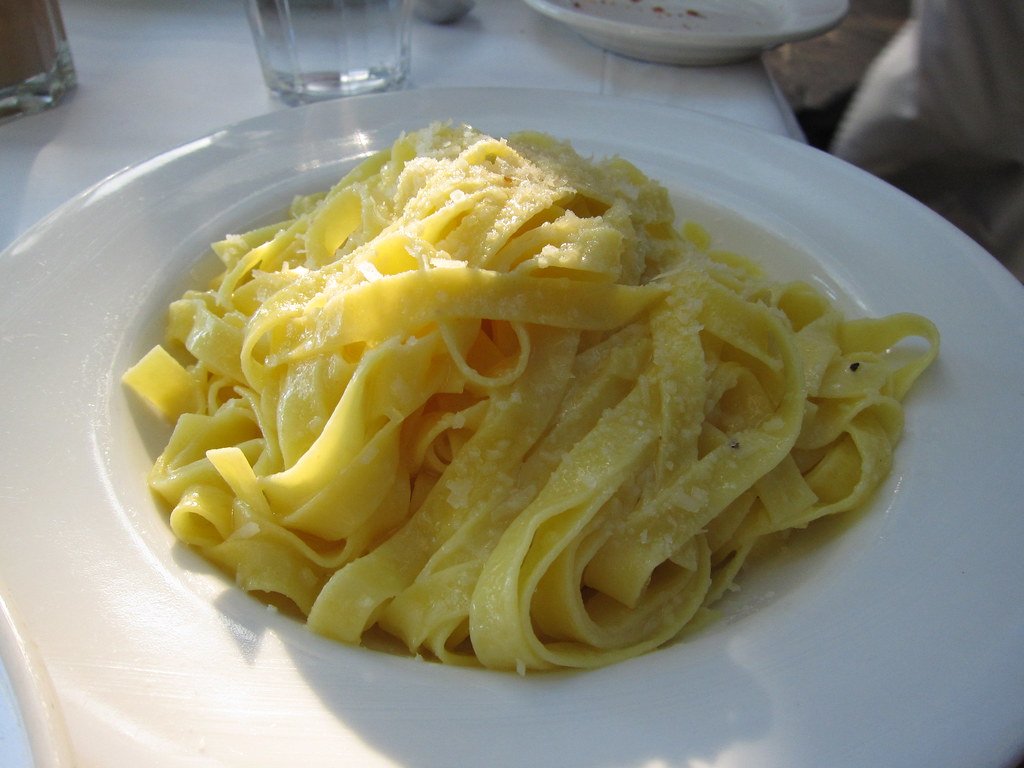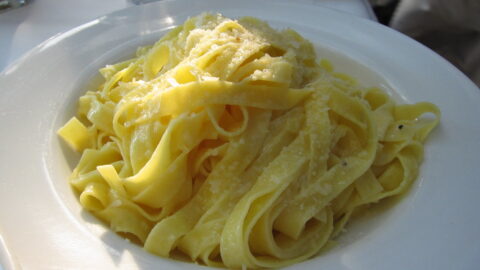Traditional Homemade Egg Noodles: Simple and Delicious
Homemade egg noodles are a labor of love, combining just a few simple ingredients: all-purpose flour, eggs, and a pinch of salt. What sets them apart is the personal touch and care that goes into their creation. These noodles are tender, slightly chewy, and offer a depth of flavor that store-bought varieties often lack. These noodles are delicious and can be used in various dishes like soups, stroganoff, or simply tossed in butter and herbs.

Ingredients
Instructions
-
Prepare your work surface: Clear a clean countertop or a large cutting board for kneading and rolling out the dough. Dust it lightly with flour to prevent sticking.
-
Combine dry ingredients: In a mixing bowl, add the all-purpose flour and salt. Stir to combine.
-
Create a well: Make a well in the center of the flour mixture. This is where you'll add the eggs.
-
Add the eggs: Crack the eggs into the well. If you want richer noodles, you can use just the yolks of the eggs. If you want to make it easier to work with, you can lightly beat the eggs before adding them to the well.
-
Mix the dough: Using a fork or your fingers, gradually incorporate the flour into the eggs, mixing until a dough begins to form. If the dough is too dry and crumbly, add a little water, one tablespoon at a time, until it comes together into a ball. Knead the dough: Turn the dough out onto your floured work surface and knead it for about 5-10 minutes. You want the dough to become smooth and elastic. If it's sticky, you can add a touch more flour as needed. Rest the dough: Wrap the dough in plastic wrap or cover it with a clean kitchen towel and let it rest for about 30 minutes. This allows the gluten to relax and makes the dough easier to roll out. Roll out the dough: After the resting period, unwrap the dough and use a rolling pin to roll it out to your desired thickness. You can make the noodles as thick or as thin as you like. Keep dusting with flour as needed to prevent sticking. Cut the noodles: Once the dough is rolled out, you can cut it into your desired noodle shape. You can use a knife to cut wide egg noodles or use a pasta cutter for specific shapes. Cook the noodles: Bring a large pot of salted water to a boil. Add the noodles and cook for 2-4 minutes, or until they are tender but still have a slight bite (al dente). Fresh egg noodles cook faster than dried ones, so keep an eye on them. Serve: Drain the noodles and use them immediately in your favorite recipe, or toss them with butter, olive oil, or sauce. Enjoy your homemade egg noodles! They'll taste far better than store-bought ones and can elevate your dishes to a whole new level.
Note
MEAL IDEAS:
-
Soups: Egg noodles are commonly used in soups such as chicken noodle soup, beef noodle soup, or vegetable soup. They provide a hearty and satisfying texture to the soup.
-
Casserole Dishes: Egg noodles are a common ingredient in casseroles like tuna noodle casserole or chicken and noodle casserole. They add a comforting and filling element to these dishes.
-
Side Dishes: You can serve egg noodles as a side dish by tossing them with butter, herbs, or a simple sauce. They complement various main dishes, such as grilled chicken or roasted vegetables.
-
Homemade Pasta Dishes: You can use egg noodles as a base for homemade pasta dishes. Toss them with your favorite sauces, such as marinara, alfredo, or pesto, and add toppings like vegetables, meat, or cheese.
-
Stroganoff: Egg noodles are a classic accompaniment to beef stroganoff. The creamy sauce pairs perfectly with the texture of the noodles.
-
Dumplings: Egg noodles can be rolled out and cut into dumpling shapes for dishes like chicken and dumplings or beef stew with dumplings.
Remember that egg noodles come in various shapes and sizes, so you can choose the one that best suits your intended dish. Homemade egg noodles are also an option if you want to customize the thickness and texture of the noodles to your liking.


